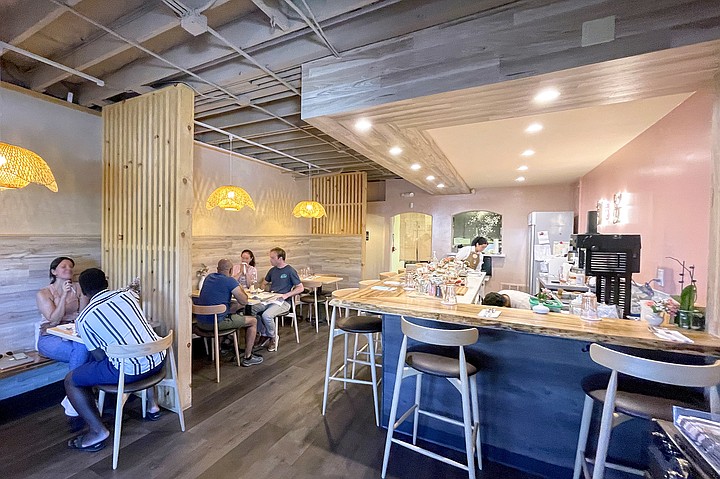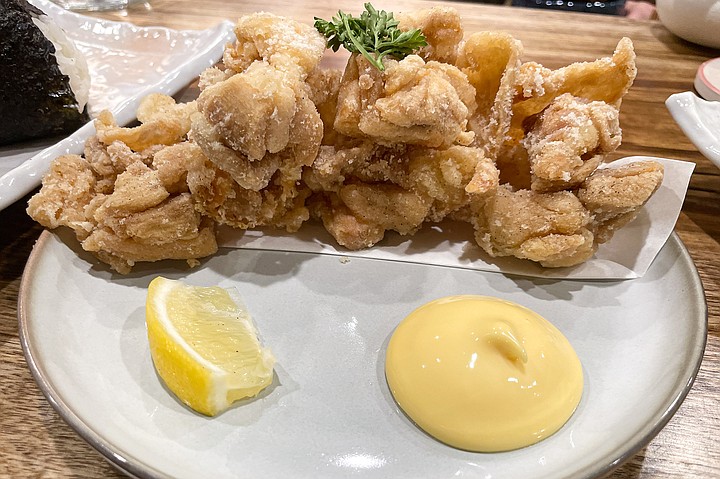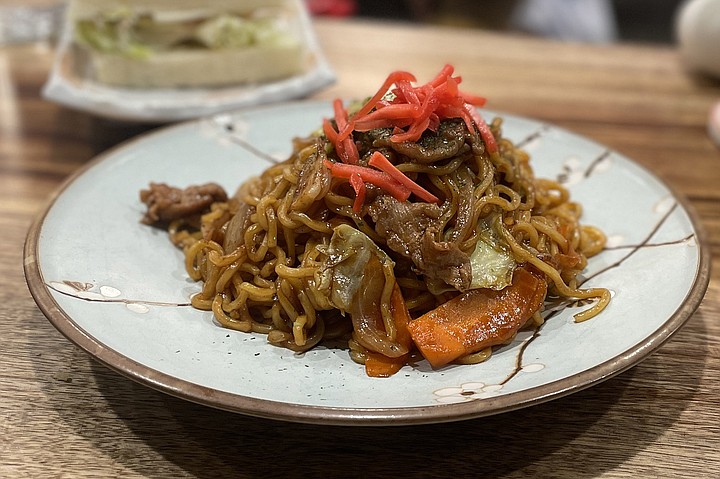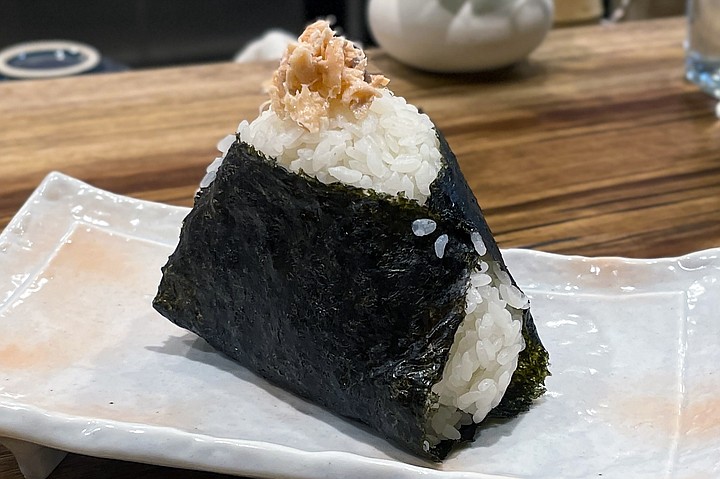The Michelin-adjacent Japanese treats of Hatsuzakura
Drinks, snacks, and desserts range from intriguing and photogenic to boring and perfect
Considering the array of idiosyncratic treats on the menu of Hatsuzakura, I’ve ordered the boring stuff.
This occurs to me as I watch a batch of emerald-green matcha tea being hand-whisked to life across the counter from my barstool. Again, as I spot an unfamiliar small appliance dispensing finely shaved ice, the base of a syrup-sweetened dessert called kakigōri. And not for the last time when the customer sitting next to me receives her order: dubbed an omurice: it’s an omelet, stuffed with fried rice, and topped with a tomato-based sauce.
It's a youthful, more fun side of Japanese cuisine than we’re used to seeing in San Diego restaurants, balanced between comfort food and the sort of things Japanese schoolkids might eat at home. Think mochi ice cream, macaroni casseroles, and white bread sandwiches, cut into triangles and trimmed of their crusts.
That it feels so youthful makes sense, given it’s an offspring of another University Heights restaurant, the Michelin-starred Soichi Sushi. Hatsuzakura translates as “first cherry blossom,” and one of its operators is first-time restaurateur Sakura Kadoya, a young daughter of the sushi restaurant’s namesake chef, Soichi Kadoya. You needn’t look far to find Hatsuzakura, either: the younger chef’s restaurant has recently bloomed right next door to her dad’s place.

It’s a similarly intimate shop, with a smattering of small tables set up around a main dining counter. Hatsuzakura is modeled after kissaten, a Japanese café tradition that puts an emphasis on coffee, tea, and snacks. Meaning, really, I should have started with a matcha latte, or better yet, an hojicha latte: likewise whisked from green tea powder, albeit a darker hue, ground from more mature tea leaves.
Instead, I spend my entire budget on two meals’ worth of more familiar items. Not because Hatsuzakura is expensive — quite the opposite, really. Everything on the menu is under $20 (though it’s easy to spend more should you embrace each dish’s suggested wine pairing). However, I load up on “the boring stuff,” because I can’t resist any of it.
Let’s start with the fried chicken, Chef Soishi’s karaage ($12). One of the elder Kadoya’s contributions to the menu, this popular item doesn’t seem like something I can ignore, despite its bland at best phot-op. The panko-crusted nuggets are practically a lesson in subtlety.

After several years allowing Nashville hot chicken to assail my palate, it’s tough to pinpoint what makes these so appealing. They’re not spicy, not too salty — they don’t taste like any one thing, so while they’re made for sharing, I finish an entire plate by myself before I can figure out why I like them so much.
Next, I do order one of those crustless, Japanese sandwiches, a.k.a. sandos, bypassing the more onventional egg salad ($10) for the “hamu sando,” ($12) made with Swiss cheese, cucumber, and lettuce. But most important are the thick, fluffy slices of crust-free milk bread. It’s a simple and fairly boring sandwich that’s otherwise perfect.

I will not apologize that I spend my next $14 on the chicken yakisoba. Even in San Diego, yakisoba is far too easily found to be considered interesting. Yet I order it from just about every Japanese restaurant I visit, hoping to conjure memories of the stir-fried noodles I devoured on weekly basis while living in Japan. Tangy, savory, slightly sweet, this one finally nails it, automatically making it my favorite yakisoba in San Diego.
Finally, with a last chance to find excitement in the little nostalgia trip Hatsuzakura provides, I tackle the onigiri. The snackiest of the shop’s snacks at $6 apiece, onigiri are seaweed-wrapped rice balls stuffed with the likes of fish, curry, or pickled plum. We used to pick up the triangular morsels from convivence stores, often after a night out clubbing. Here, they’re a little heftier, and a little more upscale than what I recall.

And though pickled plum is available, I err on the side of fish: a tuna and mayo onigiri that almost eats like a tuna salad sandwich, and a salmon onigiri that feels a little more grown-up.
Whether you consider grown-up food boring and unphotogenic, or a source of comfort, I’d consider Hatsuzakura a welcome addition to University Heights. And if you prefer to veer into unconventional territory of Japanese spaghetti with bacon, an ice cream parfait made with cornflakes, or a melon soda ice cream float, definitely make a date to bring your inner child.